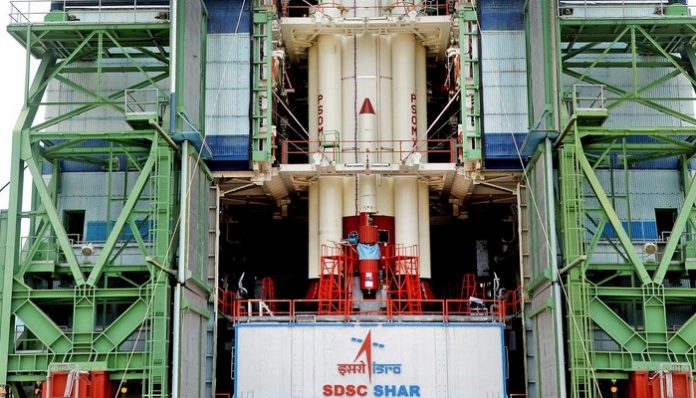The overachiever rocket PSLV-38 by ISRO was launched from Satish Dhawan Space Centre in Sriharikota, Andhra Pradesh on June 23, 2017, cargoed with the Cartosat-2 series satellite with along 30 other international co-passenger satellites.
The 28-hour countdown for the launch began at 5.29 am on the day before.
With the launch of this third spacecraft in Cartosat-2 series, India widens its bird-view capacity that shall aid the defence sector extensively.
India’ surgical strike on seven terror launch pads across the Line of Control in 2015 is credited to the resourceful images taken by ISRO’s previous satellite in the Cartosat-2 series, which had a resolution of 0.8 metres, ISRO sources said.
With a resolution of 0.6 metres, the new satellite can figure more minute objects.
This is also the 40th flight of PSLV and the 17th flight of PSLV in ‘XL’ configuration (with the use of solid strap-on motors).
This time the PSLV rocket will be loaded with a 712 kg Cartosat-2 series satellite and additional weight of 30 co-passenger satellites with a total weight of 243 kg into a 505 km polar Sun Synchronous Orbit (SSO).
Cartosat-2 series satellite is primarily a remote sensing satellite with the objective of providing high-resolution scene-specific spot imagery, similar to its previous editions.
Nano- satellites from 14 countries, namely Austria, Belgium, Chile, Czech Republic, Finland, France, Germany, Italy, Japan, Latvia, Lithuania, Slovakia, United Kingdom, and the United States of America has given company to the one from India.
The international nanosatellites are being launched as part of the commercial arrangement between Antrix Corporation Limited, the commercial arm of ISRO and International customers.
Applications of the images taken from the Cartosat-2 series satellite will come to aid in cartographic applications, urban and rural applications, coastal land use and regulation, utility management like road network monitoring, water distribution, creation of land use maps, change detection to bring out geographical and manmade features and various other Land Information System (LIS) and Geographical Information System (GIS) applications.
The satellite will also record videos from its orbit that shall come handy for a wide range of activities including military and civil planning.









